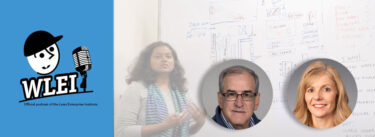Before I worked for Lean Enterprise Institute I worked for Toyota in an organization called the Toyota Supplier Support Center (TSSC), which helps companies in a variety of industries that are interested in the Toyota Production System.
One trip brought me to the largest coffee plant in the nation. When I first visited that plant they shared a fascinating statistic: they produce, every 30 seconds, the amount of coffee that an average person drinks in a lifetime. The plant manager there was Andrea. She was bright, young, motivated and a high-potential performer.
And she knew almost nothing about production.
Andrea had a very specific and very big problem to solve. Corporate wanted to shut down another operation in Kansas City and transfer all production to her plant in New Orleans. Andrea was tasked with figuring out how to make that happen. Corporate had also asked TSSC to work with her to help her solve that problem. Andrea, being bright and motivated, had the “solution” to this issue: invest in new equipment and expand the plant to support the new workforce and its production requirements. She just wanted to know how TSSC could help with that.
But on further investigation, together we learned that the operational availability of the current equipment in New Orleans was only 60 percent. So in fact, if we could increase that to 80 percent, we could bring in the Kansas City production without needing any additional equipment.
But how to do that? Andrea insisted it was impossible. The equipment was old, it had never run much above 60 percent, and she did not see the need to investigate. The people running the equipment knew best, she insisted. I tried to convince Andrea that it might be valuable to really go and see the equipment and confirm why it didn’t run. She resisted and avoided. So what to do?
I pulled in a member of her team, and for three days we watched the production line together. We zeroed in on a particular problem – the case erector. This was a machine that constructed boxes the coffee would get packed in – and it shut down often. But by simple observation, we found the reasons it often shut down.
Flat boxes were shipped from a cardboard supplier on skids of 100 at a time. The boxes were banded together by the supplier, but too tightly. This would distort the shape of the boxes, particularly those on the top and bottom of the stack. When those distorted boxes ran through the machine, it would fault and shut down the line. This happened multiple times a day. This was not the only problem with the case erector, but it opened the door for further investigation.
We set up a time for Andrea’s staff member to show her the problems we found. After seeing this, Andrea changed. She spent more time on the floor, observing the line and focusing on issues with why the line shut down. My purpose became to develop Andrea to see and solve problems. By coaching, not by telling. Out of this, Andrea learned problem solving and how to approach the floor, and in the process ultimately saved the company $50 million.
So why am I telling the story about Andrea? Because it had a big impact on me as to understanding my purpose and role as external support for her. The experience also clarified my understanding of the role of line leadership in continuous improvement.
Let’s think about the story in the context of two questions:
- What are organizations looking for from lean, particularly their leaders?
- How does leadership approach bringing lean into an organization?
Many leaders think lean will help them become more competitive, and it can. First they just need to find a way to bring it into their organization.
Their answer is often to hire a consultant or set up an OpEx group to implement the lean program. This is what Andrea did: she hired TSSC to solve her problem. It is how leaders approach most decisions.
But in the context of lean, this doesn’t work. The leader has to own the problem solving. When organizations set up OpEx groups or hire consultants, there is some immediate expectation to justify the work. So the outcome is the consultant feels the need to generate his or her own results. And in turn, line leadership feels that any improvement measure is being forced on them, and they don’t own it. But they need to own it.
Yes, the OpEx department can certainly support this. But this kind of support is not meant to solve the problems of the organization, but rather support the development of leadership to solve their own problems. So the role of OpEx in lean becomes not to answer questions, but to ask the right questions that drive learning.
Andrea brought in TSSC thinking we would solve the problem for her. But in the end, she learned that we were there to develop her to ask questions and investigate the key challenges in the organization so that she could lead and sustain improvement. And by extension, it helped build the capability in Andrea to develop other problem solvers in the organization.
Over the next few months I will be publishing more articles exploring this misconception about the role of OpEx departments in lean. Stay tuned.






